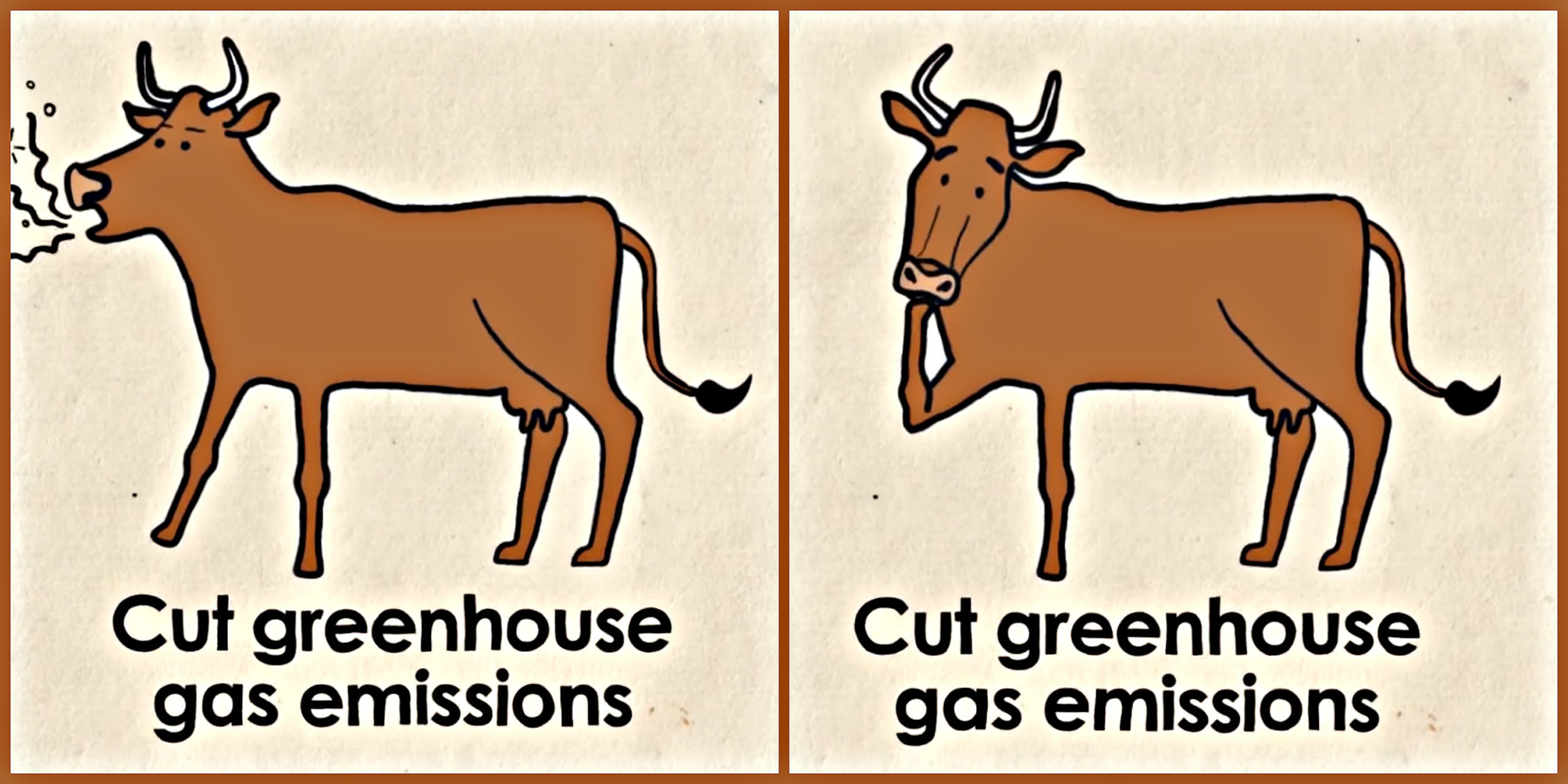(Enteric methane) greenhouse gas emissions in cows are cut 25% with feed supplement (3-NOP)
- From
-
Published on
01.03.20
- Impact Area

The addition of 3-Nitrooxypropanol to the feed of dairy cows reduced their enteric methane emissions by about 25% in a recently published study—one in a series of Penn State studies of the investigational substance in the United States—which might be an early step toward it being approved for use in this country.
‘Often referred to as 3-NOP, the compound inhibits an enzyme that is crucial to the final stage of methane synthesis in a cow’s rumen. When 3-NOP is fed to cattle, their methane production is inhibited, explained researcher Alex Hristov, distinguished professor of dairy nutrition, College of Agricultural Sciences. . . .
‘Compared with the control group, cows ingesting 3-NOP decreased their daily methane emissions by 26%, methane yield by 21% and methane emission intensity by 25%. Significantly, the investigational substance did not affect lactational performance of the cows and in fact increased their feed efficiency per unit of milk yield. The sensory properties of milk from cows fed 3-NOP and cheese made from that milk were not affected by treatment. . . .
Related news
-

DTA at COP30: Why Digital Transformation Belongs at the Heart of Climate Action
Climate Action Science Program13.11.25-
Adaptation
-
Climate adaptation & mitigation
-
Mitigation
As the world gathers in Brazil for COP30, the conversations are once again focused on…
Read more -
-

COP30: Italy joins global champions to drive food systems transformation
Climate Action Science Program13.11.25-
Adaptation
-
Climate adaptation & mitigation
-
Mitigation
11 November 2025, Belém: Italy joined the Alliance of Champions for Food Systems Transformation (AC…
Read more -
-

Accelerating wheat breeding, from Toluca in Mexico to the world
CGIAR Initiative on Breeding Resources12.11.25-
Climate adaptation & mitigation
-
Nutrition, health & food security
In Mexico, a project has been completed to develop new elite parental lines of wheat…
Read more -
